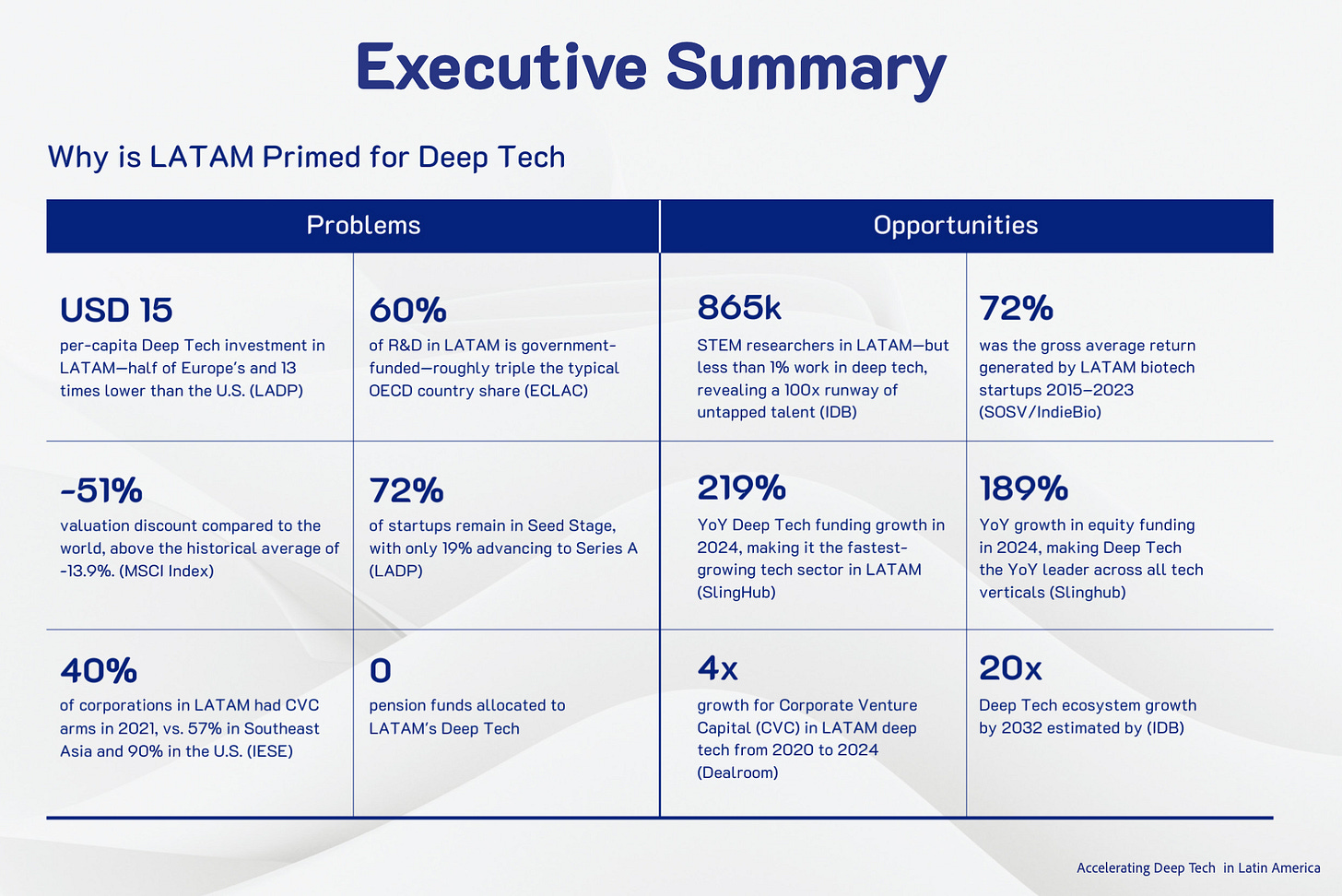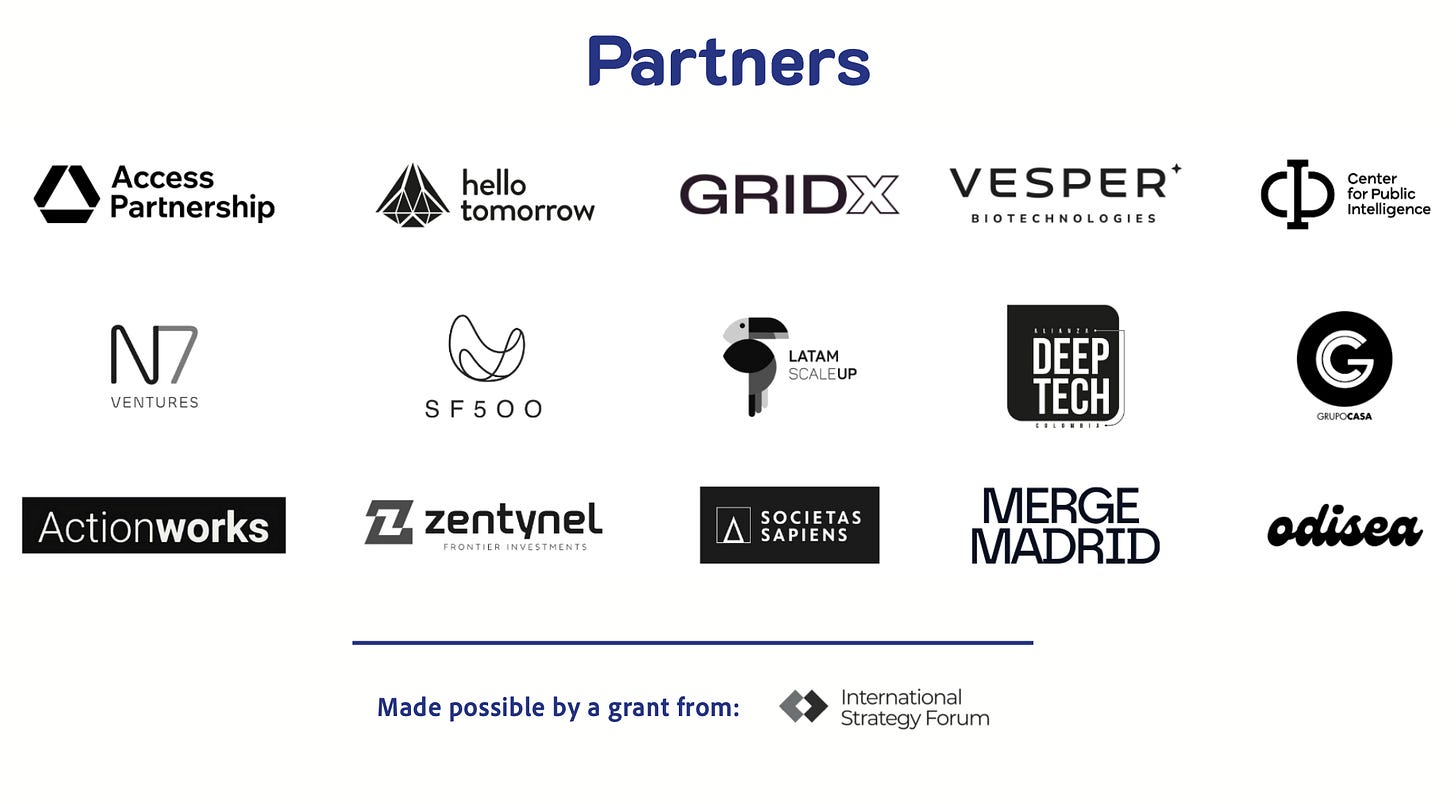LADP Launches Report On Deep Tech Opportunities In LATAM
Accelerating Deep Tech in Latin America: Opportunities, Challenges & Recommendations (English and Spanish versions available)
Geopolitics is re-shaping the geography of innovation. In 2025, countries compete for technological superiority, breaking the world back into spheres of influence. In a way, the 2020s are the new 1970s. Nations have restored Cold War aims: to outcompete rivals by appropriating the resources necessary to develop critical technologies autonomously.
There are, however, significant differences between now and the Cold War era. First, the portfolio of technologies that are considered critical to national interests is broader and deeper, ranging from advanced artificial intelligence to quantum technologies and biotechnologies.
Second, the supply chain necessary to construct these technologies is inherently global. Thus, protectionist strategies to re-shore production clash against the networked nature of innovation. Today, “no country alone can make an iPhone” – as economist Eric Beinhocker put it. Deep tech presents even greater barriers to autonomous development, given the complexity and distribution of inputs it requires, from rare minerals to talent.
Finally, with traditional alliances fading, the global race for competitiveness is participated by more players with their own interests. Today’s world has more than two poles of influence. These new geometries of power leave room for new players to affirm themselves on the global stage. Latin America is one such player.
Latin America has traditionally had a passive role in the development of the global technology industry. It has traded at a deficit with bigger partners, serving skills, resources, and market opportunities at a discount. The “Latin American Discount” is a function of the institutional fragility of individual countries in the region and of the region’s fragmentation, which prevents it from leveraging its size and competitive advantages as a block. Foreign investors cannot value opportunities at their actual worth when the context is plagued by uncertain rules, frequent corruption, and inadequate public sector de-risking of emerging markets.
Yet, current changes in geopolitics can change the position of Latin America from a deep tech vassal to a stronghold. This is the thesis behind the Latin American Dynamism Project, which is to accelerate the development and investment of frontier technologies in Latin America.
Latin America has an abundance of essential resources for the development of deep tech, globally. It is home to the lithium triangle, which represents 58% of the global reserves of the mineral. It is rich in energy, including clean sources, a critical requirement for the scaling of the compute industry, for example. It is a hub for specialised talent, for instance in the biosciences.
What Latin America lacks is the network effects that can catalyse its potential into strategic autonomy, founded upon technological competitiveness. The LADP addresses this gap by providing unprecedented insights to public and private decision-makers.
This first LADP report reveals more than a set of surprising data, which show that LATAM is already a theatre for overlooked inventions. It shows regional and global decision-makers a path to making LatAm an autonomous and reputable player in the global race for technological competitiveness. Some countries, such as China, have long understood this, undertaking for a decade now, policies of appropriation of natural resources. Others, from Latin American countries to traditional Western Allies, have been slower to realise the potential of the region as more than the sum of its parts.
We publish these insights with the ambition to catalyze conversations, communities, and ecosystems that accelerate the transition of Latin America from a battleground for technological appropriation to a strategic actor in tech-driven geopolitics.
This work is the culmination of collaboration with key regional and global innovators, and was funded by the International Strategy Forum, foundation led by Eric Schmidt, former CEO and Chairman of Google.








